More Poor Richard, Part 10
by Mark David Major, The Outlaw Urbanist contributor
Courteous Reader,
I attempted to win your favor when I wrote my first Almanac for Architects and Planners, in the name of the public good and professional betterment, by way of earning some profit and a wife. I am gratified by your expression of encouragement for my tireless efforts dedicated to these aims. Alas, my circumstances still find me exceedingly poor and, unluckily, exceedingly wifeless. I am required to earn some profit to address both problems whilst now addressing a third, namely testing the proposition that insanity is “doing the same thing over and over again and expecting different results.” To satisfy my own particular brand of insanity, I have written more proverbs and whimsical sayings for your benefit and, hopefully, my own.
As before on The Outlaw Urbanist, I write this new Almanac in increments of ten, according to the dictates of Moses and the Almighty. However, once published as an Almanac for Architects and Planners, the proverbs and witticisms were gathered into a number equal to the days of the week, after being reliably informed that both seven and ten are sacred numbers. My desired requirement for a wife is sufficient motive to write this new Almanac in the hope it will find your favor and retweets as a means of demonstrating the usefulness of my continued efforts but also your charity to this sane Friend and poor Servant,
Richard
On Architecture and Cities
91. Excessive use of beige represents an irrational fear of white.
92. A skyscraper isn’t any more a penis than a basement is a vagina.
93. The horizontal brevity of a skyscaper is inversely proportional to its vertical repetitiveness.
94. Skyscraper (skí·skrãp·ər) To wear down the heavens without regard by forceful strokes of an edged or rough building.
95. Too often, skyscapers are not about playing well with others but about playing excessively with yourself.
96. Urban circle jerk: a tradition in which architects, usually men, design unrelated skyscapers in close proximity to one another
97. Suburban circle jerk: the same as an “urban circle jerk” but with only smaller… er, buildings.
98. Design is in the details, meaning in the whole.
99. Urban planning suffers from a deficiency of heroes and an excess of sidekicks.
100. Planning a great city is heroic. Dare to be a hero.

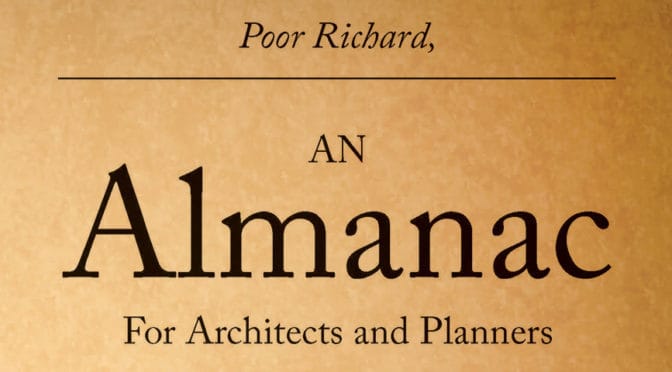


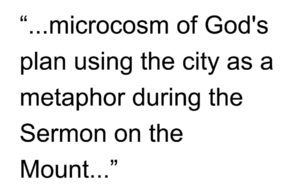

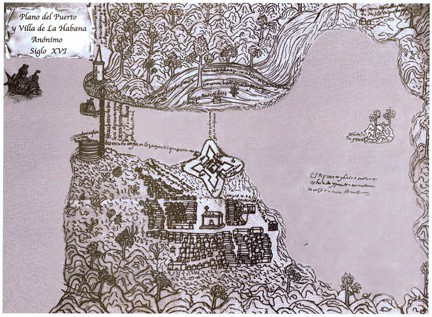
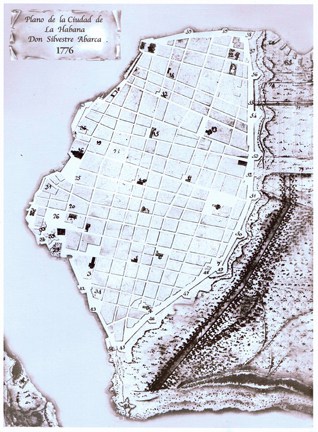
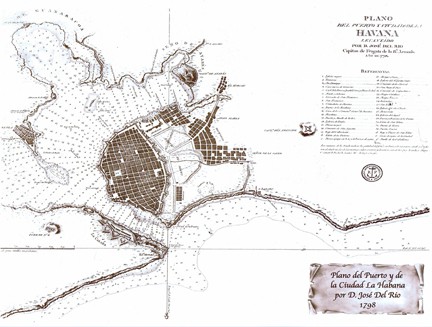
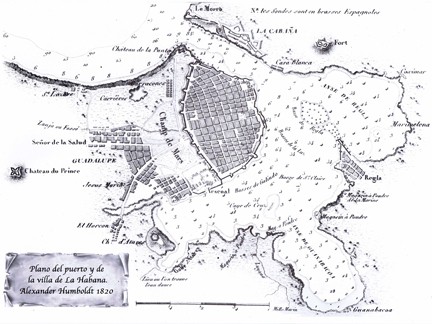
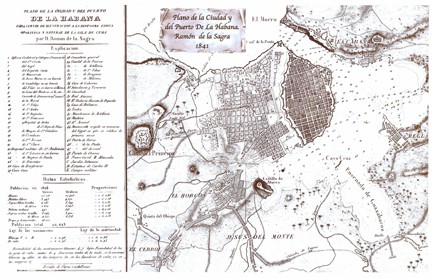
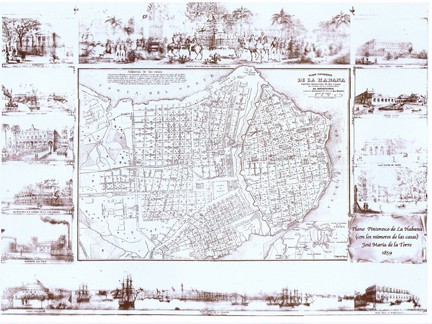
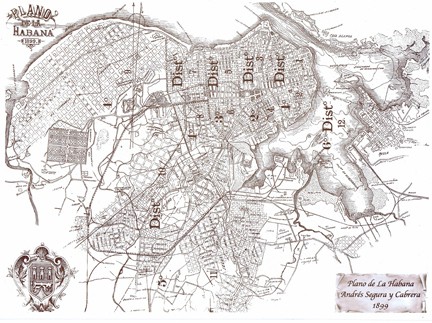
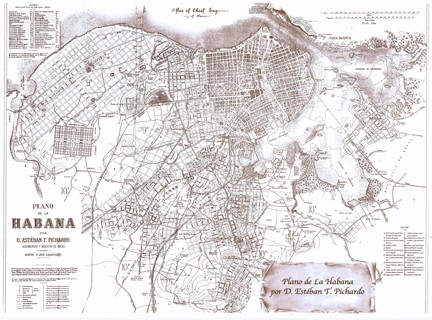
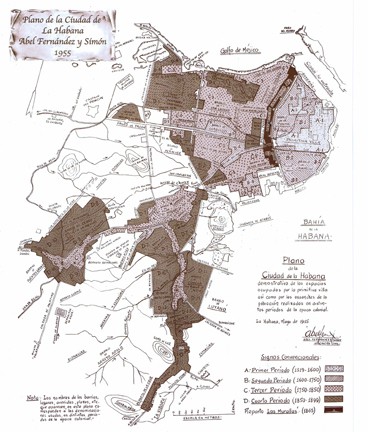
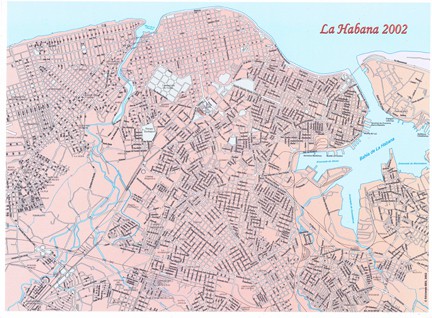

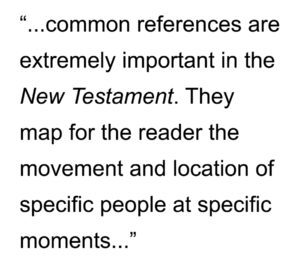 These common references are extremely important in the New Testament. They map for the reader the movement and location of specific people at specific moments, most usually Jesus and his Apostles, or in recounting past events/parables during the course of the primary action of a specific text. More than a third (36%) of the common references are a non-possessive, non-relational subject or object (direct or indirect) of a sentence. (e.g. “The city was…” or “…a city”). Again, this often occurs after a proper name was previously used in the text (i.e. we already know where the action is taking place). Finally, only eleven percent (11%) of the common references in the New Testament are possessive nouns (e.g. “the priests of the city”). These possessive nouns are often important for denoting differences; for example, between insider (e.g. resident or citizen) and outsider (e.g. visitor or stranger), the powerful (e.g. priests) and the powerless (e.g. poor), or other such relationships presented as a dichotomy in the narrative.
These common references are extremely important in the New Testament. They map for the reader the movement and location of specific people at specific moments, most usually Jesus and his Apostles, or in recounting past events/parables during the course of the primary action of a specific text. More than a third (36%) of the common references are a non-possessive, non-relational subject or object (direct or indirect) of a sentence. (e.g. “The city was…” or “…a city”). Again, this often occurs after a proper name was previously used in the text (i.e. we already know where the action is taking place). Finally, only eleven percent (11%) of the common references in the New Testament are possessive nouns (e.g. “the priests of the city”). These possessive nouns are often important for denoting differences; for example, between insider (e.g. resident or citizen) and outsider (e.g. visitor or stranger), the powerful (e.g. priests) and the powerless (e.g. poor), or other such relationships presented as a dichotomy in the narrative.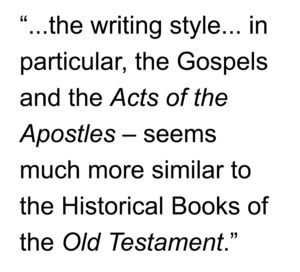 Nearly three hundred (300) or forty-two percent (42%) of the common references to the city in Old Testament are nouns denoting the location/direction of a specific person in space. However, the Historical Books deploy these common references at a greater frequency than the rest of the Old Testament. Over forty-five percent (45%) of the common references to the city in the Old Testament occur in the Historical Books. Finally, about thirty-one percent (31%) of the common references to the city in the Old Testament are a non-possessive, non-relational subject or object (direct or indirect) of a sentence. What this suggests, whatever you might believe, is the writers of the Gospels and Acts believed they were writing histories and adopted the appropriate writing style for that endeavor drawing upon the model of Old Testament texts.
Nearly three hundred (300) or forty-two percent (42%) of the common references to the city in Old Testament are nouns denoting the location/direction of a specific person in space. However, the Historical Books deploy these common references at a greater frequency than the rest of the Old Testament. Over forty-five percent (45%) of the common references to the city in the Old Testament occur in the Historical Books. Finally, about thirty-one percent (31%) of the common references to the city in the Old Testament are a non-possessive, non-relational subject or object (direct or indirect) of a sentence. What this suggests, whatever you might believe, is the writers of the Gospels and Acts believed they were writing histories and adopted the appropriate writing style for that endeavor drawing upon the model of Old Testament texts.